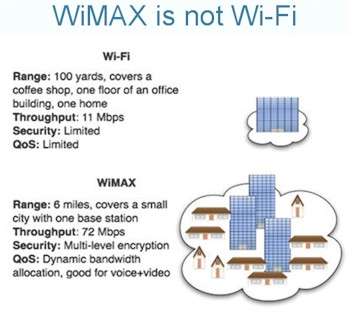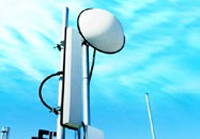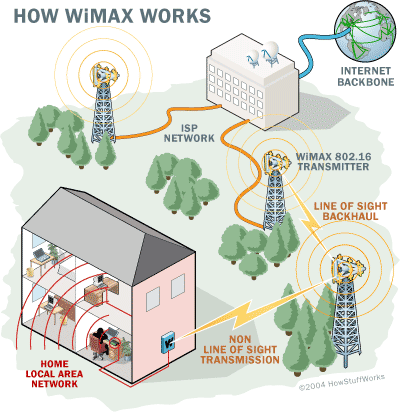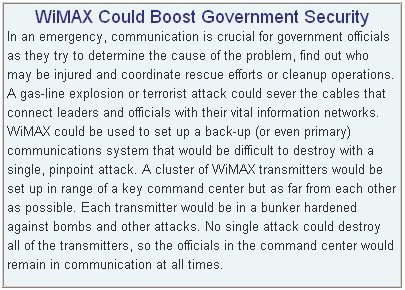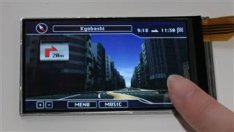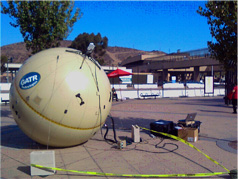|
Mainland High School
Suitable for a Disaster: ISTF 08-1835 |
||
|
Home
Introduction Contest Components One Two  Product Product
Three Fabrics History of Fabrics Smart Fabric Projects Sensors Nano Sensors Power Production Communication Cell Phones 3G Phones Data Transfer Helikites Interoperability Microwaves Relief Agencies Telecommunication Project Assessment Team |
Data Transfer
WiMAX Networks
WiMAX stands for worldwide interoperability for microwave access. WiMAX is distinct from WiFi, offering more reliability, distance, and speed. It uses the IEEE 802.16e standard, sometimes called WiMAX mobile or WirelessMAN, and functions on the frequencies between 2 and 66 GHz. It provides two forms of communication, both line-of-sight and non-line-of-sight. The most important aspect of WiMAX is that it offers a four to six mile radius for wireless access and 30 mile radius for line-of-sight antennas. This gives WiMAX a maximum range of 2,800 square miles. WiMAX covers data intensive applications such as streaming video because it uses 802.16e. It also covers cellular communication. WiMAX is implemented using a base station and WiMAX reciever. The base station is composed of a indoor electronics system similar to a cell phone tower. The receiver could be a stand alone box, PCMCIA card, or antenna. "WiMAX base station is similar to accessing a wireless access point in a WiFi network, but the coverage is greater." According to the Wireless Federation, "By 2012, Mobile WiMAX will connect 8% of the world's 1.1 billion mobile broadband subscribers, accounting for nearly 88 million users worldwide." WiMAX can also be used in establishing telecommunications in remote areas or re-estabilshing telecommunications after disasters. Epson Display Screen In an attempt to create a user-friendly and technologically-advanced mobile device, Epson has tried to create an all-in-one LCD. This device is meant to incorporates a liquid-crystal panel, a slimmer design, and many other features. Epsonís future plans concerning this new LCD involve combining it with their Photo Fine Vistarich wide viewing angle technology for use in mobile phones. With this LCD in a phone, one will be able to see the screen and easily read from it in almost any outdoor and indoor situation. Inside, it produces its on backlight, and outdoors, it utilizes its reflective technology and the outside light in order to save power. Epson has developed two prototypes: a 3.1-inch WVGA model, with 480 x 800 pixels, and a 7-inch WVGA model, with 800 x 480 pixels. SONY Flex Screens United States Display Consortium while working with the army, has thought of flexible screens to find easier ways to pass on information. Using USDC's idea, in February 2004, the Army signed a $43.7 million, five-year contract to develop a flexible computer system display center at Arizona State University. The contract includes a five-year, $50 million extension provided certain advances are made by 2009. The screens are strong, resistant to water damage and repeated bending, as well as being lightweight to not impede movement. J. A. Rogers at the University of Illinois, Urbana-Champaign, states that flexible semiconductor wires or ribbons can bend "without succumbing to semi-conductors proclivity of brittleness." In late 2005, Samsung announced its development of a diagonal 7-inch, flexible LCD screen built on a plastic substrate using a low-temperature manufacturing process for transistors. More recently, in May 2007, Sony announced an organic, thin film television screen that is able to bend and has a color display. "In the future, it could get wrapped around a lamppost or a person's wrist, even worn as clothing," said Sony spokesman Chisato Kitsukawa. Tatsuo Mori of Nagoya University added "to come up with a flexible screen at that image quality is groundbreaking. You can drop it, and it won't even break because it is as thin as paper."Clothes could have flexible screens sewn into them at places with minimal bending as in the forearm or chest. The screen can have power and information brought to it by semiconductor wires which are run from the quantum computer whose computing capacity would far exceed that of currently-available digital computers. These faster computations would allow for the recording and almost instantaneous feedback of real-time situations. Satellite Communications
GATR Technologies (Ground Antenna Transmit/Receive) was founded in 2004 in
Huntsville, Alabama. It provides deployable satellite solutions including a patented
inflatable SatCom antenna.
During Hurricane Katrina in 2005, GATR provided emergency communications for a Red Cross evacuation center at Woolmarket, Mississippi. For days its inflatable antenna was the only connection to the Internet permitting over 250 families to file online requests with FEMA. In 2007, it was named Popular Science's Invention of the Year, and later aired on Headline News in Cutting Edge Designs. In 2008, GATR participated in AfterShock which simulated an earthquake disaster recovery exercise. Arizona State University - ASU, Army Open New Flexible Display Center http://www.asu.edu/feature/includes/spring05/readmore/flexdisplay.html Business Journal - Thin, Flexible computer screens have military, civilian potential http://sanjose.bizjournals.com/sanjose/stories/2004/02/23/story7.html cnet - Samsung unveils largest flexible LCD http://news.cnet.com/Samsung-unveils-largest-flexible-LCD/2100-11395_3-5973745.html Flexible Electronic Building Blocks-Semiconductor Wires and Ribbons for High-Performance Flexible Electronic http://rogers.mse.uiuc.edu/files%5C2008%5Cangewreview.pdf GATR Technologies - About http://www.gatr.com/index.php?option=com_content&task=view&id=5&Itemid=6 GATR Technologies - AfterShock http://www.gatr.com/index.php?option=com_content&task=view&id=43&Itemid=1 GATR Technologies-Technology http://www.gatr.com/index.php?option=com_content&task=view&id=19&Itemid=26 GATR Technologies-"The Cutting Edge Designs" http://www.gatr.com/index.php?option=com_content&task=view&id=29&Itemid=26 How stuff works? - WiMAX 1 http://computer.howstuffworks.com/wimax1.htm HubPages - Wearable, Washable, Bendable Technology http://hubpages.com/hub/wearwashbendtech Nanotechnology - Nano-Computing http://www.wildirisdesign.com/nano/nanocomputing.html Physorg-Epson Develops All-in-One LCD with Integrated Touch Panel and Cover http://www.physorg.com/news112284666.html Social Text- WiMAX http://www.socialtext.net/mi021jg/index.cgi?wimax Techware Labs - WiFi vs. WiMAX http://www.techwarelabs.com/articles/other/wimax_wifi/ ThomasNet - Analog Devices Introduces RF Transceivers for Mobile WiMax Applications http://news.thomasnet.com/fullstory/536082 Tree hugger - Epson's New LCD Display is High Reflect, Low-Power http://www.treehugger.com/files/2008/10/epson-new-lcd-display-high-visibility-with-low-power.php Wi-Fi Planet- Insights http://www.wi-fiplanet.com/columns/article.php/3072471 Wi-Max - Building Blocks http://www.tutorialspoint.com/wimax/wimax_building_blocks.htm Wi-MAX - What is WiMAX Mobile or 802.16e? http://www.wimax.com/education/faq/faq40 Wireless Federation - Mobile WiMAX will Grab a Significant Market Share in 2012 http://wirelessfederation.com/news/mobile-wimax-will-grab-a-significant-market-share-in-2012/ |
